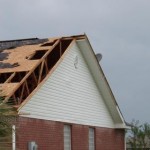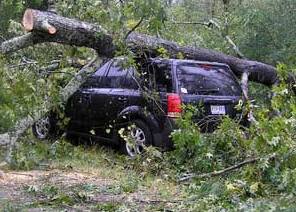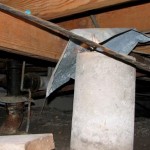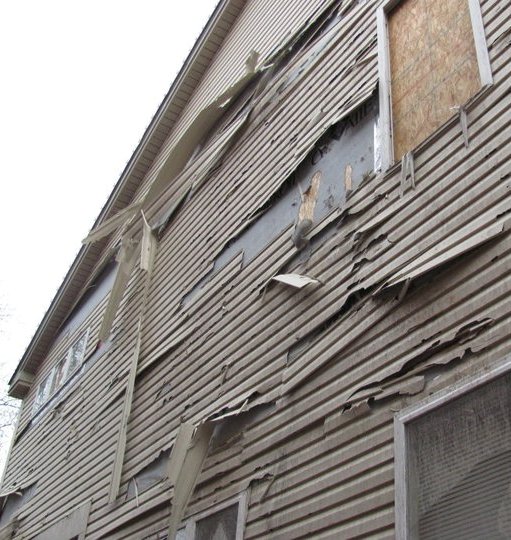20 Types of Hurricane Damage and How You Can Prepare For Them
Hurricane preparedness is not simply a matter of taping up your windows, buying a few bottles of water and calling it a day. Part of your hurricane checklist should be figuring out whether or not your home and personal property are are well prepared to face the full force of an oncoming storm. Simple steps such as buying hurricane shutters, reinforcing posts, and installing hurricane straps can mean the difference between costly repairs and a huge hurricane headache.
Below is National-Hurricane-Center’s list of 20 types of hurricane damage to help you prepare your house for a hurricane. We recommend that these projects be undertaken by experienced professionals (licensed contractors):
Pier and beam foundation damage. Trailers and oceanside property, such as beach homes found along the Gulf of Mexico are often built on pier and beam foundations. Proper reinforcement is key here (as well as not building too close to a surge zone) to mitigate the effects of strong hurricane winds blowing a home off its foundation.
Damage to roof shingles. Strong winds and flying debris can reek havoc on your homes roof shingles. They may be pulled off completely, bent and cracked (called ‘creasing), or rocks, tree limbs, and anything else propelled by incredibly strong hurricane winds can imbed themselves in your roof’s tiles and create leakage issues. These are often very difficult to spot from the ground. It is recommended that 6 nails, as opposed to the usual 4 be used to keep these tiles in place to help reinforce them.
 Damage to the frame of your house. This is a tricky one. Often the shear force of the wind itself is enough to crack the wooden frames of many homes, and much of the time there is no outward sign of damage. Reinforce your home with hurricane clips to even out the force of the wind on the entire house.
Damage to the frame of your house. This is a tricky one. Often the shear force of the wind itself is enough to crack the wooden frames of many homes, and much of the time there is no outward sign of damage. Reinforce your home with hurricane clips to even out the force of the wind on the entire house.
Damage to garage doors. Metal garage doors are huge weak points in your home. They face a beating from propelled debris that may leave dents. The door itself may become misshapen or roll off of their tracks due to the force of the wind or flying objects. Garage door retrofitting kits are available to strengthen garage doors at their weakest points. Be sure to check garage door building codes to ensure that in the event of hurricane damage, you have the best chance of recovering your hurricane insurance claim.
Driveway damage. Although this is probably one of the last places you’d look for hurricane damage, driveways are still highly susceptible to wind and water damage from hurricanes. Before the storm approaches, ensure that there are no heavy objects (weak trees, etc…) that might crack your concrete. Trees pose a particularly high risk hear, especially if the root system runs under a driveway or walk. An uprooted tree can pull up part of your driveway with it.
Blown off awnings. This may be one of the easier contingencies to prepare for, especially if the awnings are detachable. These fairly weak structures don’t stand a chance in strong hurricane winds. It is best to retract or remove them altogether if possible. Wind and flying debris can knock off both the awning and the piece of house it’s connected to.
Air conditioning unit damage. We in the South love our air conditioning. Arguably, this innovation helped to spur population growth here. Unfortunately, these mostly outdoor structures are highly vulnerable to torrential rain, flooding, high winds, and flying debris. Before a storm hits, make sure that your unit is completely turned off (if a hanging unit, unplugged as well) and covered with something sturdy enough to protect it from the wind and rain. After the storm, have it inspected before ever turning it back on.
Blown in windows. With winds that range from 74-160 mph, hurricanes, and that which is propelled by hurricane force winds pose a significant threat to your windows. Besides having shards of glass flying around at high speeds, the winds entering your home push inward and can cause your home, especially the roof, extreme structural damage. Installing simple shutters can prevent thousands of dollars in hurricane damage. Don’t bother with tape, it only wastes time. This USA Today article provides an excellent description of how you can protect your home against a hurricane, without wasting time.
Gutter Damage. Your gutters are weak. If they have too many leaves in them they can fall off. But, like awnings, they are attached to your home and if blown off, they can take part of it with them. Make sure that they are well reinforced and clean. Also clear your outdoor area of as many items as possible that may become air borne missiles targeting your gutters.
Siding Damage. As utilitarian as vinyl or wood siding can be, they are highly vulnerable to high winds and debris. Before the storm hits, make sure that any punctures or tears in your siding are repaired immediately. These can become exacerbated during the storm. Clear your yard of any material that may fly through the air and damage your siding. Also, if possible, cover your siding with tarp to add an extra layer of protection during the storm.
Carport and porch damage. Because of the light materials used to build these structures, they are often the first things to blow off in the event of a hurricane. Hurricane straps can be used to reinforce these structures so that the pressure from the winds are more evenly distributed. The posts of carports and porches should be firmly and securely attached to both their foundations, internal supporting structures, and their roofs.
Damaged doors. Your doors and windows are structural weak points in your home. If you have a screen door in front of a solid door, it may be best to remove it altogether. Glass doors should be protected with plywood or hurricane shutters and heavy exterior doors should be shut and locked with a deadbolt during the storm.
Swimming pools. This is another ignored area of hurricane home preparedness. Your swimming pool needs the water inside of it to keep the concrete from cracking. Never empty your pool before a hurricane, rather, keep it at least half full and add extra chlorine to kill microbes that may be present after the storm. If possible, cover your pool.
Moisture and Leakage. If you haven’t taken any of the above home hurricane preparedness precautions, there is a definite chance that water may have seeped into your home. Other than making sure your roof is secure and your frame is reinforced, make sure that any attic or basement vents are covered to prevent excess water from entering your home and reeking havoc. Mold and moisture weakened frames can be both extremely costly to repair and create highly unsanitary conditions for you and your family.
Damaged personal documents. To ensure that very important personal documents like social security cards, financial documents, and other paper forms are kept hurricane-damage safe, make sure they are in a secure location at all times free from any danger of becoming wet.
Storm surge damage. This is almost unavoidable if you live in the thick of a storm surge inundation zone. The force is simply too strong much of the time. If possible, sand back weak points in your property or around your home to try and keep as much water out as possible. A good rule of thumb is to make sure that you know the answer to ‘will my insurance cover hurricane damage?’
Damage from downed trees. Many people often forget that both their homes and lives are at risk from downed trees. Sheltering near weakened, tall trees is one of National-Hurricane-Center’s 5 Deadliest Hurricane Mistakes. Make sure that any branches or limbs that are weak or cracking are pruned. Doing so will not only make cleanup easier, but may save you a bundle in hurricane repairs.
Vehicle damage. Our cars are very often as important as our homes. Protect your vehicle from wind and water damage by parking in a garage, in an area not prone to flooding. Airborne projectiles and falling trees can dent and ding your vehicle to oblivion. If you absolutely cannot park in a covered area, tape your windows (the one time that this is  appropriate) and cover your vehicle with a tarp for an added layer of protection. If your car has been subjected to flooding, don’t turn it on until a mechanic has checked it out. Doing so risks causing an enormous amount of damage to your vehicle.
appropriate) and cover your vehicle with a tarp for an added layer of protection. If your car has been subjected to flooding, don’t turn it on until a mechanic has checked it out. Doing so risks causing an enormous amount of damage to your vehicle.
Damage to aluminum screen enclosures (sun rooms) for pools and patios. These structures are weak and not nearly as reinforced as a sturdier building like a house or garage. Hurricane winds and flying debris can give these structures a beating. Make sure that there is ample anchorage in the corners of the structure and that rusted or weakened parts are replaced, and make sure that the structure is very securely anchored to the concrete it sits on.
Damage to gabled roofs. Gabled roofs have two sloping sides and one flat side. They are a series of trusses connected by a long beam that sits on top. Unreinforced gabled roofs are often heavily damaged during storms, as they are not as wind resistant as their 4-sided ‘hip’ roof counterparts. To reinforce your gabled roof, install truss bracing to hold the roof in place more securely.
Taking these simple precautions can mean the world to your bottom line. Be sure to take photos of your home, all buildings on your property, and your vehicle before the storm hits to have these photos available when you file your hurricane insurance claims. Let this me an important step in your personal hurricane preparedness plan and hurricane preparedness checklist.



Recent Comments